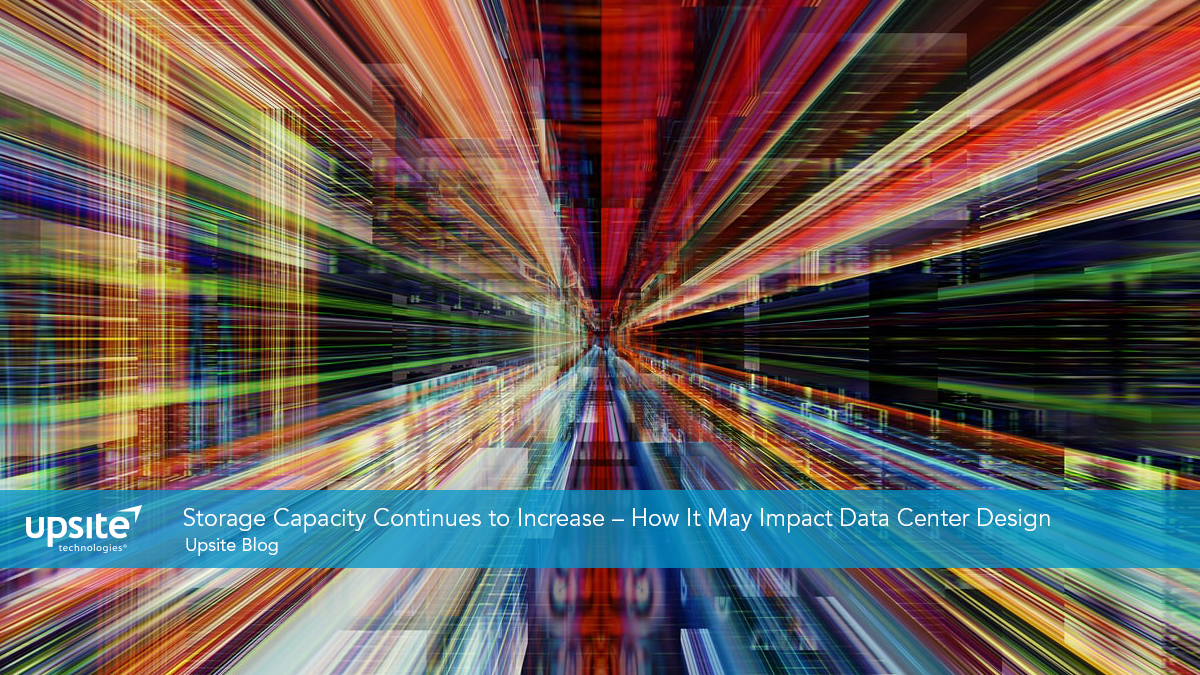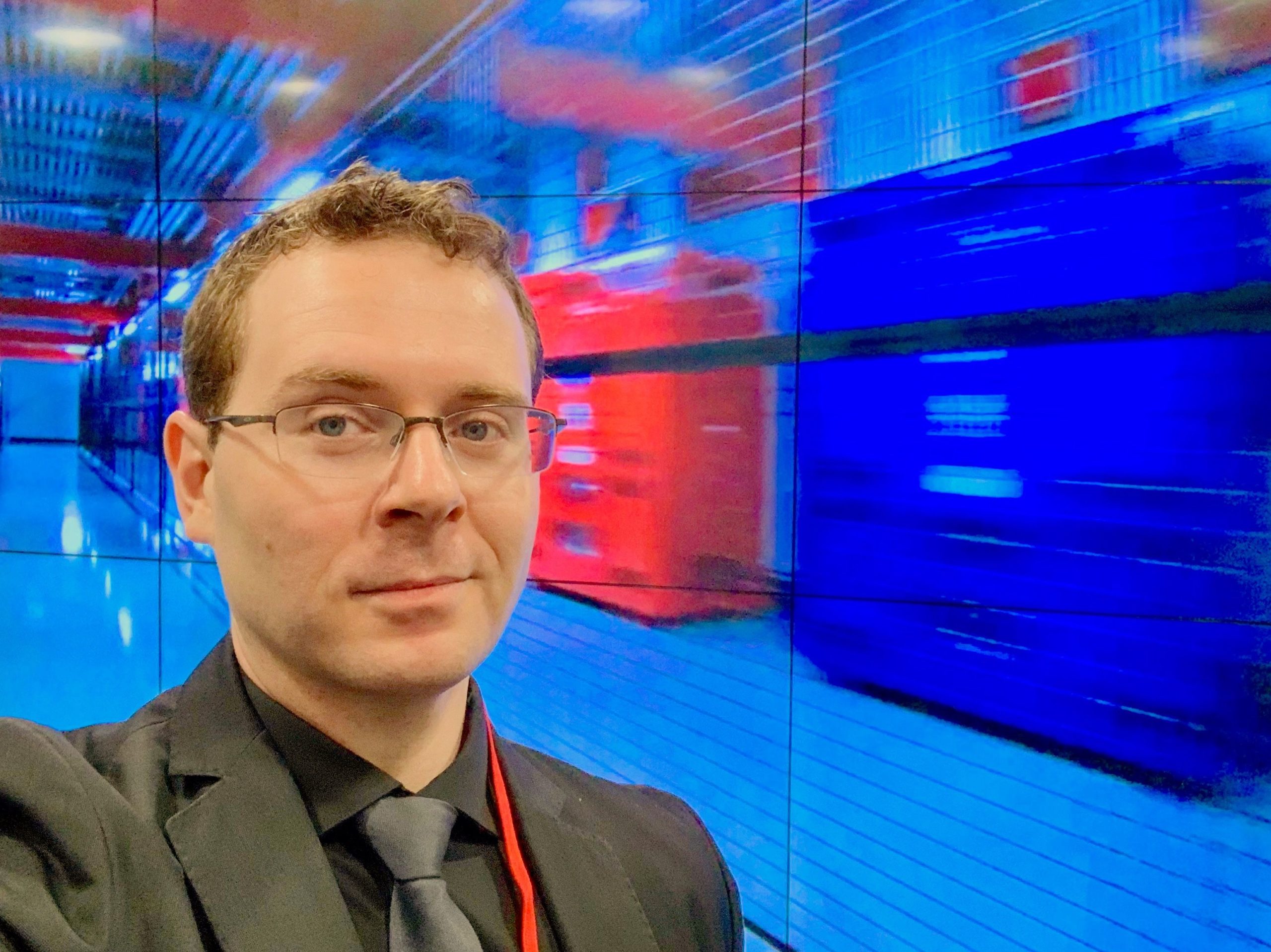Storage Capacity Continues to Increase – How It May Impact Data Center Design15 min read

Here’s the thing, we’re creating more data. A lot more. Cisco recently pointed out that driven by the Internet of Things, the total amount of data generated (and not necessarily stored) by any device will reach 847 ZB per year by 2021, up from 218 ZB per year in 2016. In fact, data created is two orders of magnitude higher than data stored.
By 2021, data center storage installed capacity will grow to 2.6 ZB, up from 663 EB in 2016, nearly a 4-fold growth.
Findings from the latest AFCOM State of the Data Center report show similar trends regarding the increase in storage capacity. The typical respondent reports a current total estimated mean data storage capacity of 7.5 PB. Within three years, nearly 30% will have 10 or more PB, and 18% will be moving into the 50+ PB range. What are they doing to combat all this growth? As the report points out, respondent facilities are most likely to react to storage growth by leveraging storage virtualization, flash storage, and storage consolidation.
All of these mechanisms to work with storage capacity growth have the potential to change the way you design and deploy your data center.
Why Storage Matters to the Data Center
Let’s take all-flash as an example. All-flash is one of the leading technologies being implemented by data centers to deliver on new use-cases and improve overall performance. However, all-flash also forces data center leaders to focus on their design. In a recent report from Forrester (commissioned by Pure) where analysts examined the economic impact of removing legacy spinning disks and replacing them with all-flash solutions was compelling. Interviewed customers reported significant power and cooling savings when they replaced legacy disk storage with all-flash technologies. For the various organizations, energy and cooling savings totaled $74,231 over three years and assumed a cost per KWH for a power of $0.14 and a cost per KWH for cooling of $0.10.
Now, let’s look at this from a data center design perspective. We know that spinning disks take up space and power, and they require specific design considerations about cooling. So, what happens when you remove entire rows of spinning disks and replace them with all flash? I had the chance to work with a use-case where a customer went from 40 racks of equipment (mainly spinning disk), taking up more than four rows in their data center, down to 2 racks of a converged infrastructure solution powered by all-flash. In this type of design, you need to look at the entire data center. How does this impact your aisles? What about airflow? Do you need to reposition fans? Are there aisles you’ll need to seal up?
Remember, organizations are now deploying new kinds of data centers that are specifically designed to be efficient. And, new concepts like the edge are forcing us to re-think data center design.
Virtualization and storage consolidation aim at reducing the amount of hardware required to run your business. These days you’re working with solutions which offer more density when it comes to working with applications, users, and services.
All of this requires a holistic look at data center optimization and design. That said, here are three quick tips to help you along on your journey to have a happier, healthier, and more efficient data center.
- Work with solutions that are easy to implement. There are some fresh new solutions out there that can be inserted into existing data center designs. Magnetic additions, like rack panels, can be easily integrated to improve airflow and efficiency. Other solutions can make retrofitting a data center much simpler as well. You don’t have to go through a forklift operation to gain some compelling
- IT teams need to work closely with data center and facilities to gain the most significant This part is critical. IT teams need to communicate requirements to the data center and facilities teams. This means knowing what’s being deployed, the amount of gear being removed, and the placement of new solutions. You may need to balance out your aisles and be mindful in how you remove existing gear and where you install new equipment.
- Treat data center environmental variables as a science; adapt as needed. The pace of evolution within the data center is pretty quick. In fact, we see investment happen at all sorts of exciting levels – including containerization management and orchestration. An agile data center is also one that’s capable of supporting new and advanced use-cases. So, if you treat your environmental variables as a science, you’ll remain agile and capable of supporting new and advanced use-cases. This means continually evaluating your levels of efficiency, where things like airflow can be optimized, and how best to utilize your existing resources. Aside from doing a CFD study, for example, you can work with partners who’ll help you grow and evolve.
And on that point, you don’t have to go at this alone. Working with good partners regarding your storage capacity will help with design considerations and best practices. Whether you’re an enterprise data center or a colocation, working with new types of storage solutions will support your data center to be more efficient. Through it all, leveraging new technologies can help create competitive advantages, support new business initiatives, and allow you to introduce new levels of data center optimization.

Bill Kleyman
Industry Analyst | Board Advisory Member | Writer/Blogger/Speaker | Contributing Editor | Executive | Millennial
Bill Kleyman is an award-winning data center, cloud, and digital infrastructure leader. He was ranked globally by an Onalytica Study as one of the leading executives in cloud computing and data security. He has spent more than 15 years specializing in the cybersecurity, virtualization, cloud, and data center industry. As an award-winning technologist, his most recent efforts with the Infrastructure Masons were recognized when he received the 2020 IM100 Award and the 2021 iMasons Education Champion Award for his work with numerous HBCUs and for helping diversify the digital infrastructure talent pool.
As an industry analyst, speaker, and author, Bill helps the digital infrastructure teams develop new ways to impact data center design, cloud architecture, security models (both physical and software), and how to work with new and emerging technologies.
Airflow Management Awareness Month
Free Informative webinars every Tuesday in June.







0 Comments